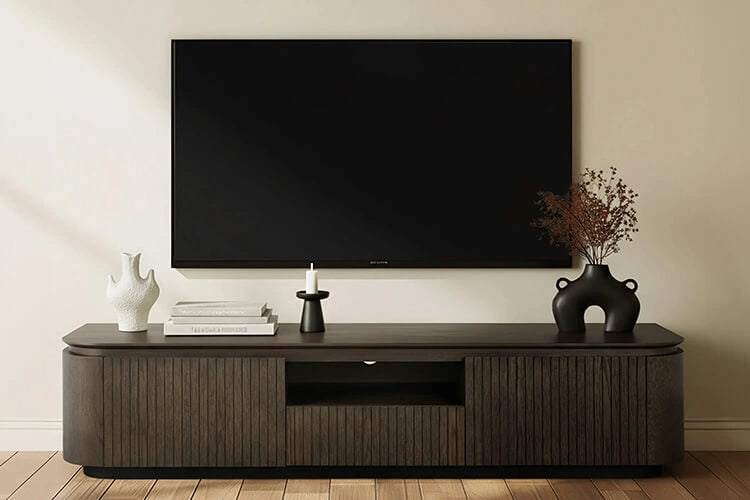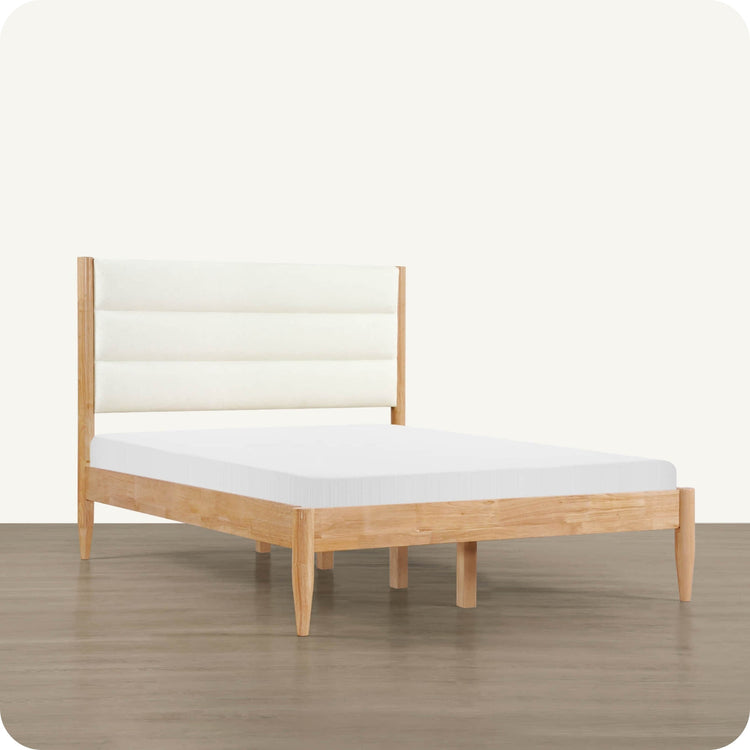| Type of Leather | Quality | Appearance & Feel | Durability | Maintenance Frequency |
| Full-Grain Leather | Best quality | Distinct grain and texture | Highly stain- and wear-resistant | Every 6 to 12 months |
| Top-Grain Leather | Slightly processed | Smooth finish, soft feel | More prone to stains and scratches | Every 3 to 6 months |
| Faux Leather | Affordable | Mimics real leather | Less breathable, less durable | Every few months |
| Bonded Leather | Least resilient | Fused pieces, consistent look | Prone to rapid deterioration | Every 3 to 4 months |
For many homes, leather sofas are a timeless option. They are really comfortable and have a fantastic appearance. However, it's crucial to clean and take care of them on a regular basis to keep them looking gorgeous and lasting a long time. In this post, we'll cover the reasons why maintain leather sofas, cleaning frequencey, easy at-home cleaning tips, and when to consider hiring a professional. Let's move and find out!
Why Does a Leather Sofa Need Maintenance?
Leather is a durable material, but it still requires care to prevent damage. It might get dry, discolored, cracked, or stained if it isn't properly maintained.
Porosity of Leather
Unlike fabric upholstery, leather upholstery, has certain characteristics that make it both attractive and difficult to maintain. Because it is porous, spills, dirt, and oils will be absorbed by it. If you don't clean up spills quickly, liquids like coffee, wine, food, and ink can leave tough stains on your leather sofa. Only through frequent cleaning can help to avoid the ugly marks and damage.
Prevent Mold Growth
Bacteria can accumulate inside the leather of your leather sofa if you don't clean it on a regular basis. Over time, this may cause mildew or mold to grow.
Health Considerations
Leather couches can accumulate dust and allergens. You should keep your sofa clean and reduce the likelihood of allergic responses or other health issues by vacuuming it on a regular basis.
Other Issues Gonna Happen if Neglect
Furthermore, with time, the leather's color may fade under direct sunlight. Leather loses moisture as it dries, which can lead to splits and a reduction in flexibility. Frequent maintenance keeps your sofa looking good and helps avoid these problems.
How Often Should You Clean the Leather Sofa?
If you want to maintain your leather sofa's excellent appearance, It's critical to understand how often to clean it. This depends on a few things, like the leather types, the intensity of use, and the conditions in your home, but you may establish an effective cleaning schedule for both you and your sofa by taking these variables into consideration.
Different Types of Leather for Sofas
Since not all leather is made equal, it's critical to understand the type of leather used to make your sofa, to plan an efficient cleaning program. The following are some typical varieties of leather you may come across:
- Full-Grain Leather: The best quality leather available is full-grain leather. It has a distinct appearance and feel as it keeps its original grain and texture. This kind of leather is a fantastic option for busy homes because it is very stain- and wear-resistant. Suggested maintainance routine is every six to twelve months.
-
Top-Grain Leather: Top-grain leather is slightly more processed than full-grain. While the finish is still lovely, it could be more prone to stains and scratches. To prevent damage for best results, top-grain leather should be cleaned every three to six months.

See the rich beauty of genuine top-grain leather on Senan Sofa
- Faux Leather: Also known as synthetic or vegan leather, this type of leather is composed of polyurethane or PVC. It replicates the texture and appearance of real leather and is typically less expensive and easier to maintain. Unfortunately, it is not as breathable as genuine leather. Generally, faux leather can be kept looking new by cleaning it every few months.
- Bonded Leather: Bonded leather is created by fusing leftover pieces of real leather and synthetic material together. This kind is the least resilient and is prone to rapid deterioration. To keep it looking great, regular cleaning is advised every three to four months.
Lifestyle & Usage
Your lifestyle and how often the sofa is used should be taken into consideration when determining the cleaning frequency. You should clean the sofa more frequently if you have kids or dogs, or if it's often used for family get-togethers. Aim for once a month or every two months. But if your sofa isn't used as much, a quarterly cleaning can be enough.
Environmental Factors
A thorough assessment of your home's environmental conditions will help you customize your cleaning schedule better.
- Humidity: An excessively humid home may encourage the growth of mold and mildew. To maintain your sofa safe and fresh in this situation, it's best to clean it once a month.
- Temperature: Leather may crack due to drying out in extremely high or low temperatures. If it is next to heating vents or receives direct sunlight from windows, try cleaning your sofa every two to three months.
How to Clean Your Leather Sofa
Cleaning your leather sofa on a regular basis and removing stains are two important maintenance tasks. Here are a few effective techniques to maintain the best possible condition for your sofa.
General Cleaning Guidelines
- Dust Often: Every week, dust your leather sofa with a soft, dry microfiber cloth. This prevents the buildup of dirt and oils that may cause stains.
- Use a Mild Cleaner: Choose a leather-specific solution when further cleaning is required. As an alternative, you can combine a few drops of mild dish soap with some warm water in a basin. Wipe clean the sofa carefully after soaking a cloth in the solution and wringing it dry to avoid getting it completely soaked.
- Condition the Leather: Use a leather conditioner every six to twelve months to keep your leather supple and stop it from breaking. Apply the product according to the directions provided; different products may have different requirements.
- Steer Clear of Harsh Chemicals: Avoid using any ammonia, bleach, or other abrasive cleansers that can scratch the leather's finish.
- Test Before Applying: Before using any cleaning or conditioner on the full surface of the leather, always test it on a tiny, discrete section of the leather. This makes it less likely to tarnish or harm the leather.
Further Removal Techniques for Specific Stains
Besides routine maintenance, understanding the various stain kinds and how to treat them will enable you to take prompt, decisive action before the stains worsen.
| Type of Stain | Removal Technique |
| Food and Drink Spills | Blot with a soft cloth. Avoid rubbing to spread the stain. Clean with a damp cloth and mild soap, then dry with a clean towel. |
| Red Wine Stains | Blot immediately. Dab with a cloth soaked in equal parts water and white vinegar. Dry with a clean cloth. |
| Oil Stains | Sprinkle baking soda or cornstarch on the stain. Let sit for hours, then brush off with a soft cloth. Repeat if needed. |
| Juice Stains | Blot the stain, then gently wipe the area using cloth with a mix of soap and water solution. Rinse the cloth and wipe again, then dry thoroughly. |
| Coffee Stains | Same as the juice stains. |
| Lipstick Stains | Scrape excess gently with a dull knife. Dab with a cotton ball soaked in rubbing alcohol, then wipe with a damp cloth and let dry. |
| Ink Stains | Dab lightly with a cotton ball soaked in rubbing alcohol. Make sure not to soak the leather. Wipe with a damp cloth and let dry. |
| Blood Stains | Blot with a cold, damp cloth. Clean with a mild soap and cold water solution, then wipe and dry with a towel. |
No matter what kind of stains you encounter on your leather sofa, it’s best to follow the general tips below for all of them:
- Act Fast: The quicker you address the stain, the easier it will be to remove.
- Use Soft Towels: Always use soft cloths to avoid scratching the leather.
- Do It Gently: Be gentle when cleaning to prevent damage to the leather surface.
- Don't Soak the Leather: Avoid saturating the leather, as excess moisture can cause damage.
- Dry Thoroughly: Make sure to dry the area completely after cleaning to prevent any moisture-related issues.
When to Seek Professional Help: Signs to Look For
While most problems may be resolved with routine cleaning, there are some circumstances that call for expert assistance. Here are a few signs that it might be time to consult the professionals:
Severe Stains
Professional cleaning may be required if you have attempted to remove it numerous times without success, or if a stain is large or deeply set.
Extensive Wear
If your leather is exhibiting noticeable wear signs, such as deep fractures or fading, time to turn to experts for evaluating the damage and offering repair solutions.
Odors
Strong smells that don't go away after cleaning could be a sign of underlying problems that need to be addressed.
Time Restraints
If you're short on time or concerned about doing the cleaning yourself, hiring a professional service will relieve your tension and guarantee that your sofa gets the best care. Just make sure to look for reputable services that specialize in leather cleaning and restoration.
Protect Your Leather Sofa's Beauty!
Taking care of your leather sofa to keep it looking great is all about regular cleaning and maintenance. The special properties of leather, your lifestyle, and your living space should all be taken into consideration when determining how often to clean. Overall, you can safeguard your investment by employing the proper cleaning techniques, setting up a cleaning schedule that fits your needs and, if needed, don't forget to hire an expert!





































































1 comment
Great guide on leather sofa maintenance! These tips are super helpful for keeping leather furniture looking fresh and lasting longer. Proper care really makes a difference—thanks for sharing these expert insights